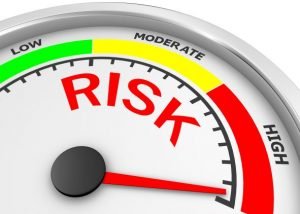Driving—like every facet of life—has its share of risks. Everything from the kind of vehicle to the weather can contribute to spurring a road mishap. But the fact that 87% of Americans still take to the streets every day means either they understand the risks or don’t overthink about it. They’ll get to their destination safely and eventually.
Even the drivers themselves are a risk factor, from their driving habits to history of car accidents. According to a 2015 report published by the U.S. National Highway Traffic Safety Administration, driver error accounts for over 90% of accidents nationwide. Making bad decisions and paying little heed to the surroundings are common ways to cause crashes.
The harm an inattentive or reckless driver can inflict on life and property spurred laws to make car insurance mandatory. Massachusetts was the first to enforce such a law in 1927, with other states following suit over 30 years later. As of this writing, New Hampshire remains the only holdout.
If the average motorist must get car insurance, then it’s all the more reason for high-risk drivers to do so. As experts say, it’s better to carry car insurance and not use it than not have one at all during a mishap. Fortunately, high-risk drivers are still eligible for some coverage.
What Qualifies As ‘High-Risk?’
Before determining the right car insurance for high-risk drivers, defining the term ‘high-risk’ first is essential. Insurance agencies categorize car owners under one of three tiers: preferred, standard, and high-risk. You can visit this link to know more, but the gist is this:
- Preferred-risk drivers have a good—if not clean—driving and financial record, including a history of getting sufficient coverage. They get the best rates.
- Standard-risk drivers are the most common, logging at most two minor traffic violations and one at-fault mishap. They get slightly higher rates but still adequate.
- High-risk drivers have logbooks worth of traffic violations, especially DUI. Not only are they required to get insurance but also proof of one called an SR-22.
Agencies then further categorize high-risk drivers into four subcategories. It’s not unusual for one to fall under more than one subcategory or even all, which can worsen one’s standing.
- Bad Credit – Holders with a low credit score, which is between 300 and 579 points. As car insurance is an investment, those with a history of financial failures are a liability.
- Existing Claims – Holders with a history of claims filed against them, whether at-fault or no-fault. This factor justifies carrying car insurance no matter your state of residence.
- Age Bracket – Holders who are 25 years old or below, or 65 years old or above. These drivers are more prone to making mistakes while driving.
- Non-Homeowners – Holders who don’t own a home or are renting. Though not a major consideration, some providers take this into account since it’s proof of financial stability.
High-risk drivers usually pay 25% more on their premiums compared to the others. They can work their way to standard or preferred tiers, but it’ll entail many hardships.
Specialized Providers Are Few
High-risk drivers are less likely to get adequate insurance from their preferred insurance agencies. Not only are the providers hesitant to offer coverage to such motorists but also reluctant to provide sky-high rates. It’s best to look into a submarket of the car insurance industry specializing in high-risk insurance—and there are only a modest number of them.
As mentioned earlier, high-risk drivers will need an SR-22 to go with their high-risk car insurance. Contrary to popular belief, an SR-22 is not an insurance policy but rather a document that proves that the holder is sufficiently covered. It also doesn’t directly penalize the holder with unfavorable rates for having one.
However, it’s better to think of this arrangement as a stopgap. While carrying this insurance policy, you can work your way to reduce your risk among mainstream providers. Drive responsibly, fulfill your dues on time, improve your credit rating, and never let your SR-22 expire—you’ll eventually get better offers. Depending on the state, a driver’s SR-22 status can last for at least three years.
Conclusion
Getting car insurance may be expensive, but not having one in the middle of an accident carries a heftier price tag. Talking to a provider about getting the best possible rates is easier than you think. Even drivers with a pending DUI case can lean on a handful of high-risk insurance providers to help them out.
Never pass up on the opportunity to safeguard your finances in a disaster. And above all else, never take the privilege of getting behind the wheel for granted.












